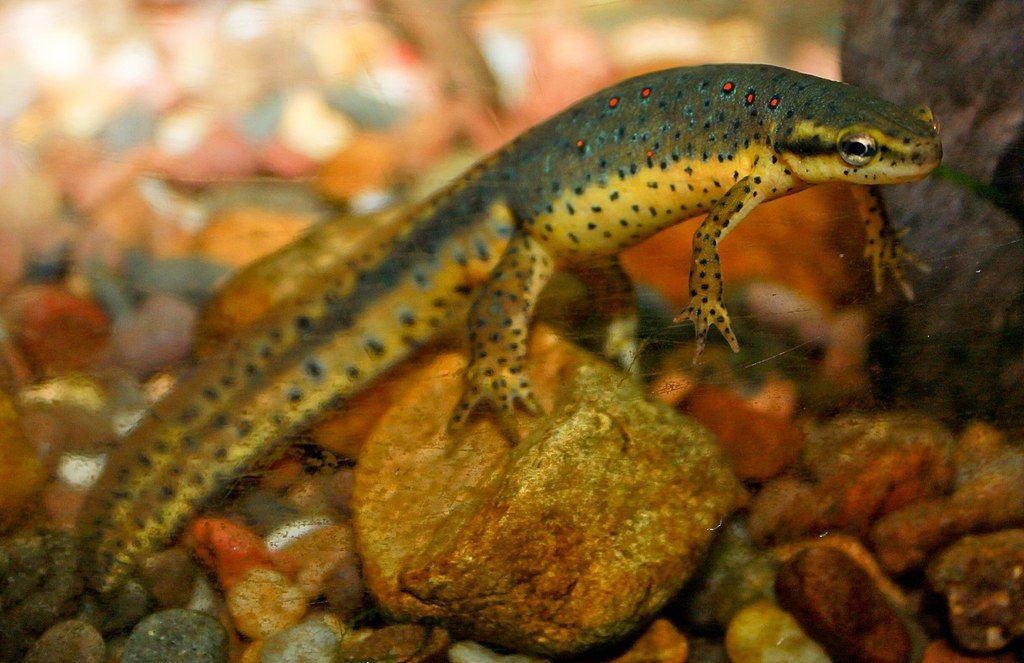
10 March 2024
Last Thursday I went looking for fairy shrimp(*) at Todd Nature Reserve and found amorous red-spotted newts (Notophthalmus viridescens) instead. The newts attracted my attention because I had never seen adults before, let alone their courtship.
When you think “red-spotted newt” you probably visualize the red eft, the juvenile terrestrial, dry-skinned phase that lasts 1-3 years. Since red-spotted newts can live up to 15 years this phase is not a high percentage of its lifetime, but it is unforgettable.
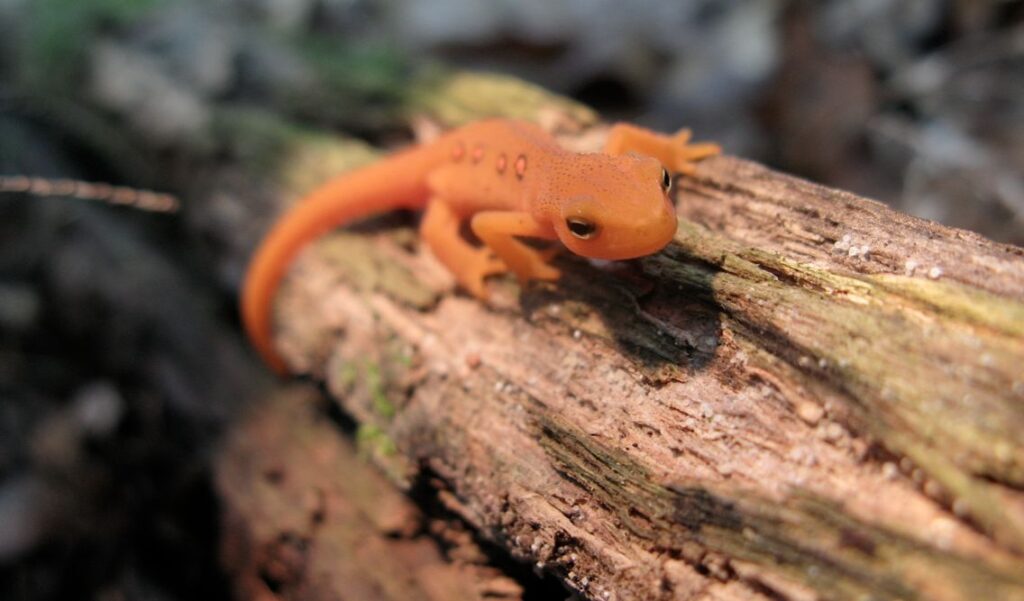
Red efts wander fearlessly overland because their bright orange color and red spots outlined in black are a warning to predators: “Don’t eat me! You’ll regret it.”
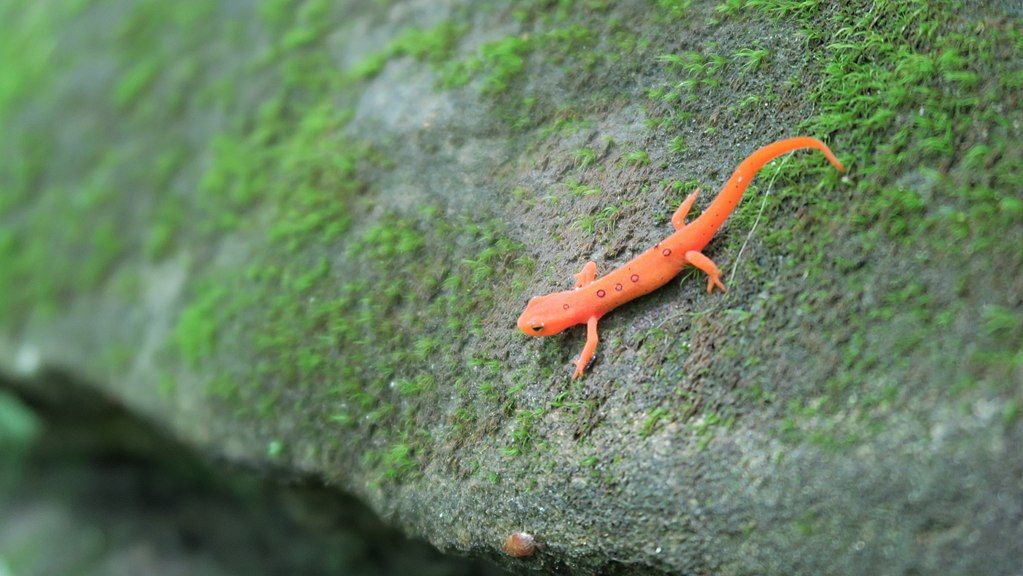
The skin of juveniles and adults secretes tetrodotoxin (TTX), the same neurotoxin found in pufferfish that causes paralysis and death.
According to Wikipedia, TTX “can enter the body of a victim by ingestion, injection, or inhalation, or through abraded skin.” But this hasn’t stopped anyone from holding red-spotted newts. Apparently this activity is just fine.
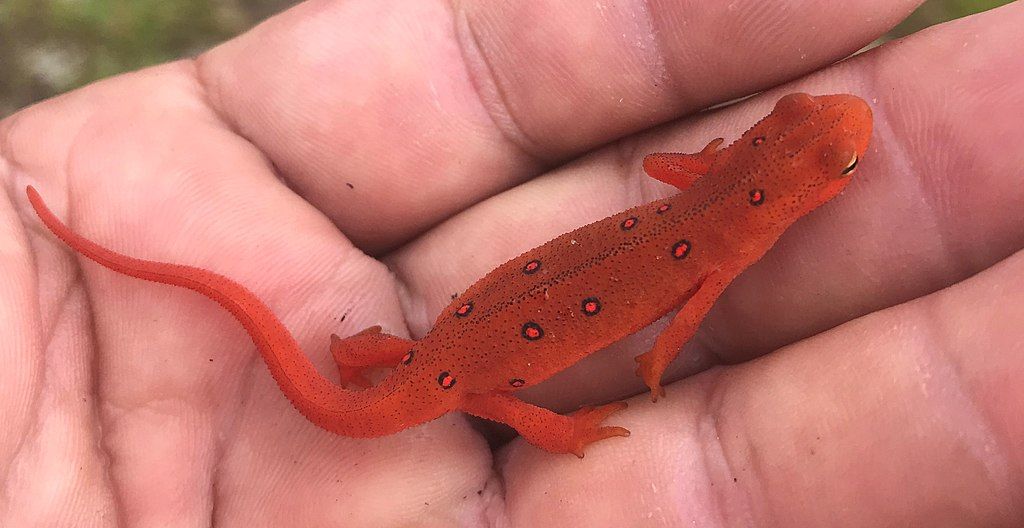
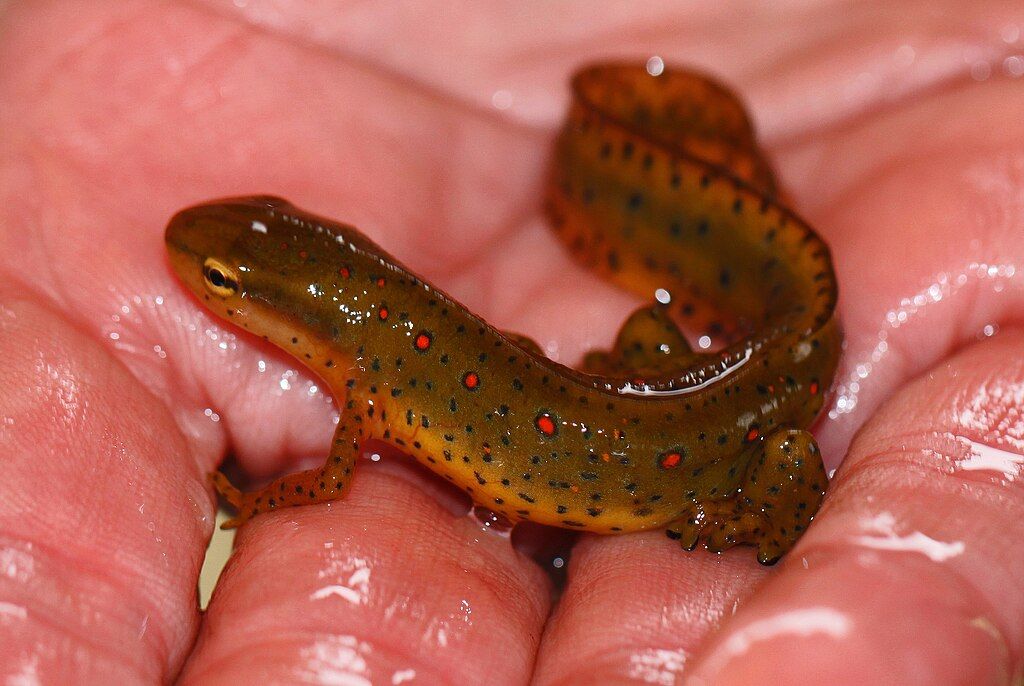
Fortunately people don’t eat newts except …
Poisonings from tetrodotoxin have been almost exclusively associated with the consumption of pufferfish.” … [In North America there is] at least one report of a fatal episode in Oregon when an individual swallowed a rough-skinned newt (Taricha granulosa) on a dare.
— Wikipedia: Tetrotodoxin
The red spots warn predators. They also attract female newts during the breeding season.
Courtship in newts is fascinating. The male will lure and entice the female with his many red spots and wiggling tail, which releases pheromones (specialized chemicals). The male, with his hind legs, will grasp the female just behind her forelimbs and then rub his chin along her snout just prior to external fertilization.
— Connecticut Dept of Energy and Environmental Protection: Red-spotted newt
She likes his red spots. He embraces her.
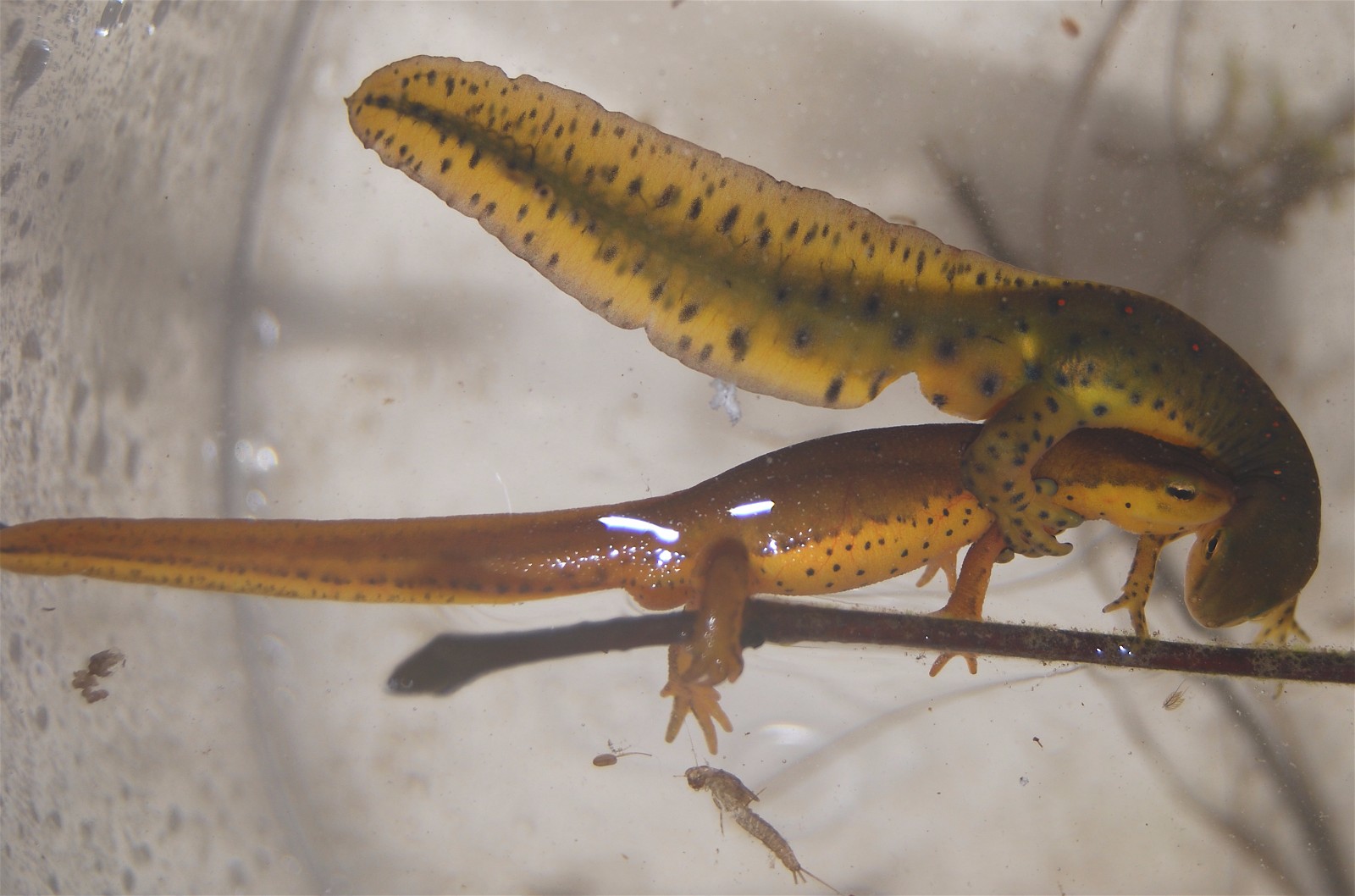
It’s very sweet to see this in Spring.
(credits are in the captions)
(*) p.s. Click here to learn about fairy shrimp.